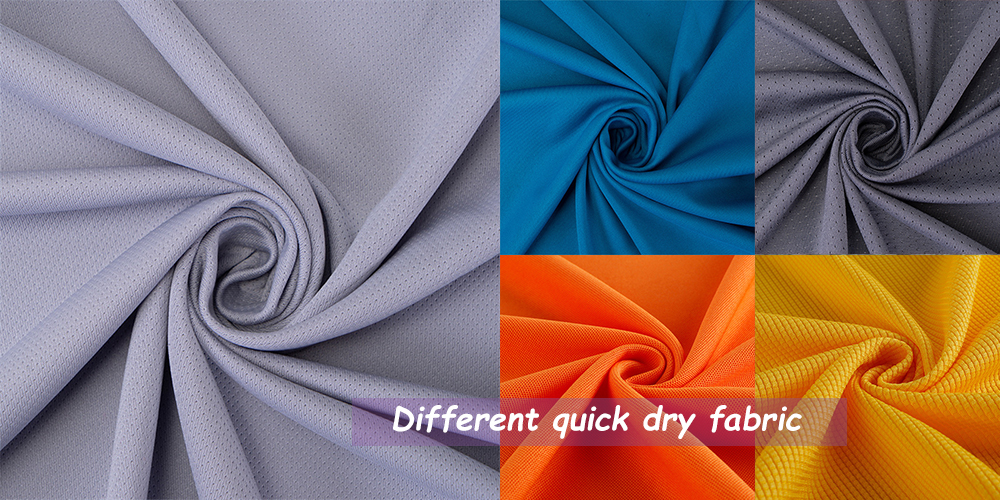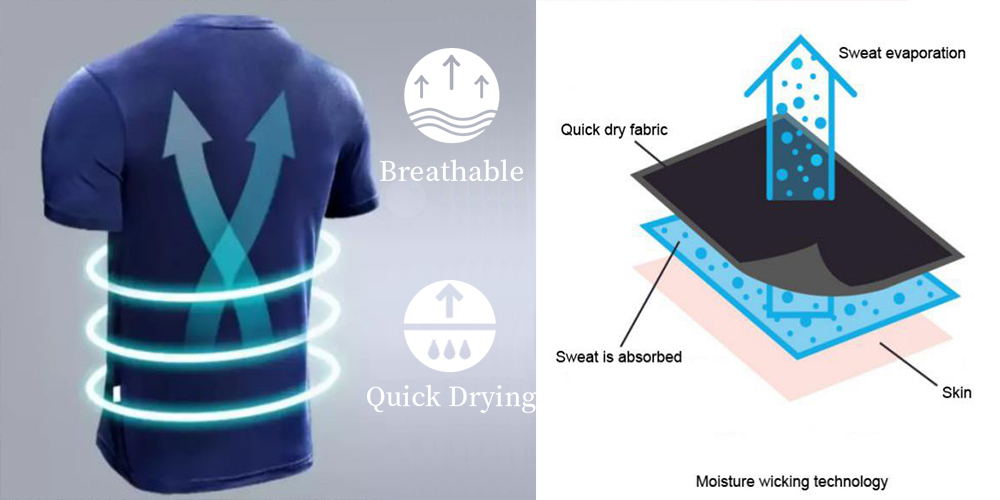Clothing that can dry quickly is essential for your travel wardrobe. Drying time is just as important as durability, re-wearability and odor resistance when you’re living out of your backpack.
What is Quick-Dry Fabric?

Most quick-dry fabric is made from nylon, polyester, merino wool, or a blend of these fabrics.
I consider something to be quick-drying if it goes from wet to damp in less than 30 minutes and dries completely in a couple of hours. Quick-drying garments should always dry completely when hanging overnight.
Quick-drying clothing is ubiquitous these days, but quick-drying synthetic clothing is a relatively recent invention. Before synthetic fabrics like polyester and nylon, wool was the only option.
During the hiking boom of the 1970s, the demand for quick-drying fabric exploded. More and more people hit the trail to find out their clothes got wet and stayed wet. Nobody likes to hike (or travel) in wet clothes that never dry out.
Advantages of Quick-Dry Clothes

Quick-drying clothes have two main advantages.
Firstly, moisture-wicking fabric keeps you warm and dry by wicking moisture (sweat) away from your skin. We lose a small part of our body heat (about two percent) with the air. But we lose nearly twenty times as much body heat when we dive into water. If you can stay dry, you stay warm.
Moisture also increases friction between fabric and skin, which can lead to blisters (wet socks) or rashes (wet pants or wet underarms). Quick-dry clothes can prevent all of this by keeping your clothes as dry and fitting as when you first bought them.
Secondly, quick-drying fabric is great for life on the road because they can be washed by hand, hung to dry overnight, and worn (clean) again the next day. If you pack lightly, we recommend that you pack your clothes for a week, then wash and wear them again. Otherwise, you’re packing twice as much for a two-week trip.
Which is the Best Quick-Dry Travel Fabric?
The best travel fabric is polyester, nylon, and merino wool. All of these fabrics dry quickly, but they work in their own way. Cotton is generally a good fabric, but it dries too slowly to be a great choice for travel.
Below is a comparison of four of the most popular travel clothing fabrics.
Polyester
Polyester is the most commonly used synthetic fabric and is said to dry quickly because it is extremely hydrophobic. Hydrophobicity means that polyester fibers repel water rather than absorbing it.
The amount of water they absorb varies depending on the weave: 60/40 polycotton absorbs more water than 80/20 polycotton, but in general polyester fabrics only absorb about 0.4% of their own weight in moisture. An 8 oz polyester t-shirt absorbs less than half an ounce of moisture, which means it dries quickly and stays dry for most of the day because not much water can evaporate inside.
The best part is that polyester is durable and affordable. You will find that it is mixed with various products and other fabrics to make those fabrics more economical and make them more durable and quick-drying. The disadvantage of polyester is that it lacks the built-in odor protection and breathability of fabrics like merino wool (depending on the weave).
Polyester is not ideal for very wet environments, but it is an ideal fabric for hand washing and re-wearing in milder conditions.
Does Polyester Dry Fast?
Yes. Complete internal drying of polyester garments takes two to four hours, depending on temperature. Outdoors in direct sunlight and outdoors, polyester can dry in as little as an hour or less.
Nylon
Like polyester, nylon is hydrophobic. In general, nylon is more durable than polyester and adds a bit more stretch to the fabric. It’s stretch is ideal for comfort and freedom of movement. However, before buying nylon clothing, read reviews and avoid brands or products known to stretch or “bag out” and lose their shape.
Look for nylon blends for comfortable travel pants. Nylon also blends well with merino wool, making the high-quality fabric more durable.
Does Nylon Dry Fast?
Nylon clothes take a little longer to dry than polyester. Depending on the temperature, drying your clothes indoors can take four to six hours.
Merino Wool
I love merino wool travel clothes. Merino wool is comfortable, warm, light and odor resistant.
The disadvantage is that merino wool absorbs up to a third of its own weight of moisture. However, the story does not end there. Pure merino wool is not a quick drying fabric. However, this is okay due to the incredibly narrow width of high quality merino fibers. The fiber is measured in microns (usually thinner than a human hair) and only the inside of each merino fiber absorbs moisture. The outside (the part that touches your skin) remains warm and comfortable. That’s why merino wool is so good at keeping you warm, even when it’s wet.
Merino socks and shirts are often woven from polyester, nylon, or tencel, meaning you get the benefits of merino with the durability and quick-drying properties of synthetic fabrics. Merino wool dries much slower than polyester or nylon, but faster than cotton and other natural fibers.
The whole point of wearing a quick-dry material on a hike is to wick moisture away from your skin to keep you warm, and merino does it better than anything else. Look for merino wool blended with polyester or nylon and you’ll get quick-drying clothes that feels a million times better when you are wearing it.
Does Merino Wool Dry Fast?
The drying time of merino wool depends on the thickness of the wool. A lightweight wool t-shirt dries faster than a heavyweight wool sweater. Both take about the same time to dry indoors as polyester, between two and four hours. Drying in direct sunlight is even faster.
Cotton
Backpackers avoid cotton like the plague because it doesn’t perform well when wet. Cotton fibers are the most hydrophilic (water absorbent) fabrics you can find. According to some studies, cotton can absorb up to ten times its own weight in moisture. If you are an active traveler or hiker, avoid cotton t-shirts and prefer something less absorbent.
Does Cotton Dry Fast?
Expect your cotton clothes to dry between two and four hours indoors or just one hour outdoors in direct sunlight. Thicker garments, such as cotton jeans, will take much longer.
Fuzhou Huasheng Textile Co.,Ltd, Committed to providing high-quality quick dry fabrics. Besides quick dry, we can also provide fabric with different function finishing. For any inquiry, please do not hesitate to contact with us.
Post time: Sep-09-2022